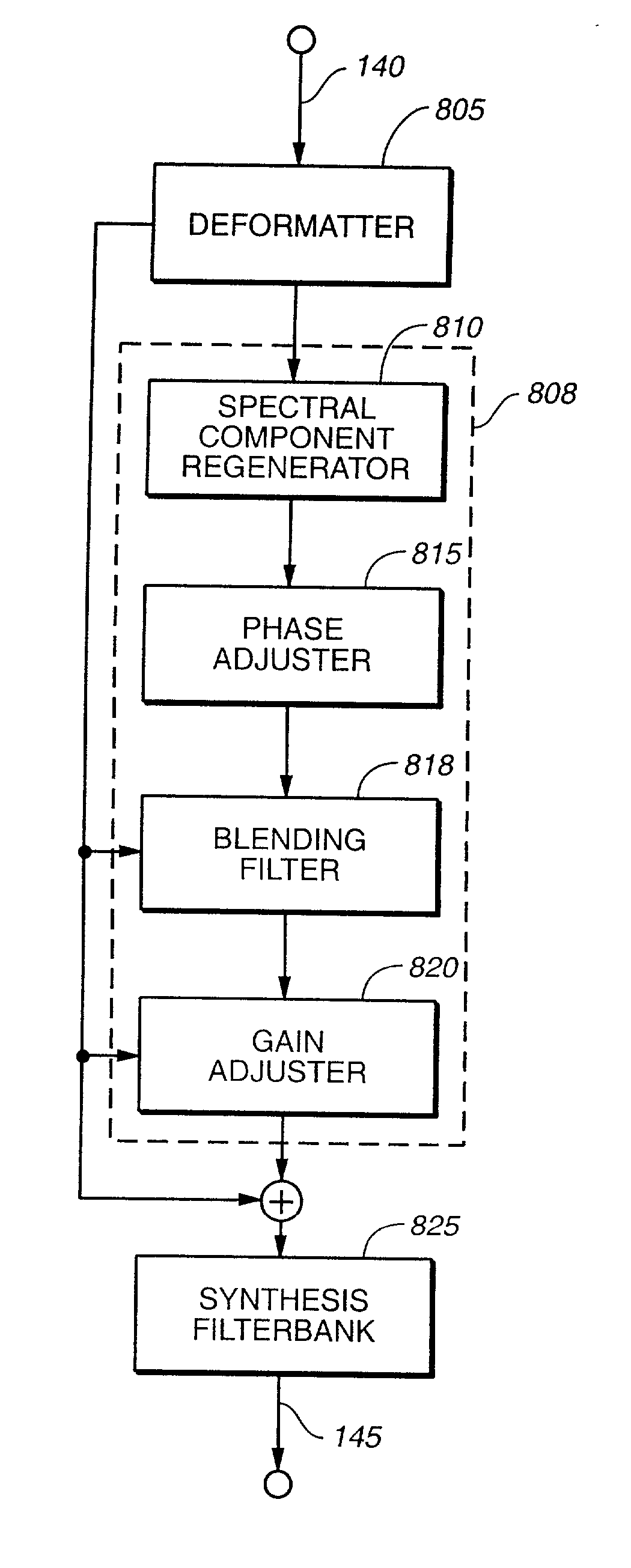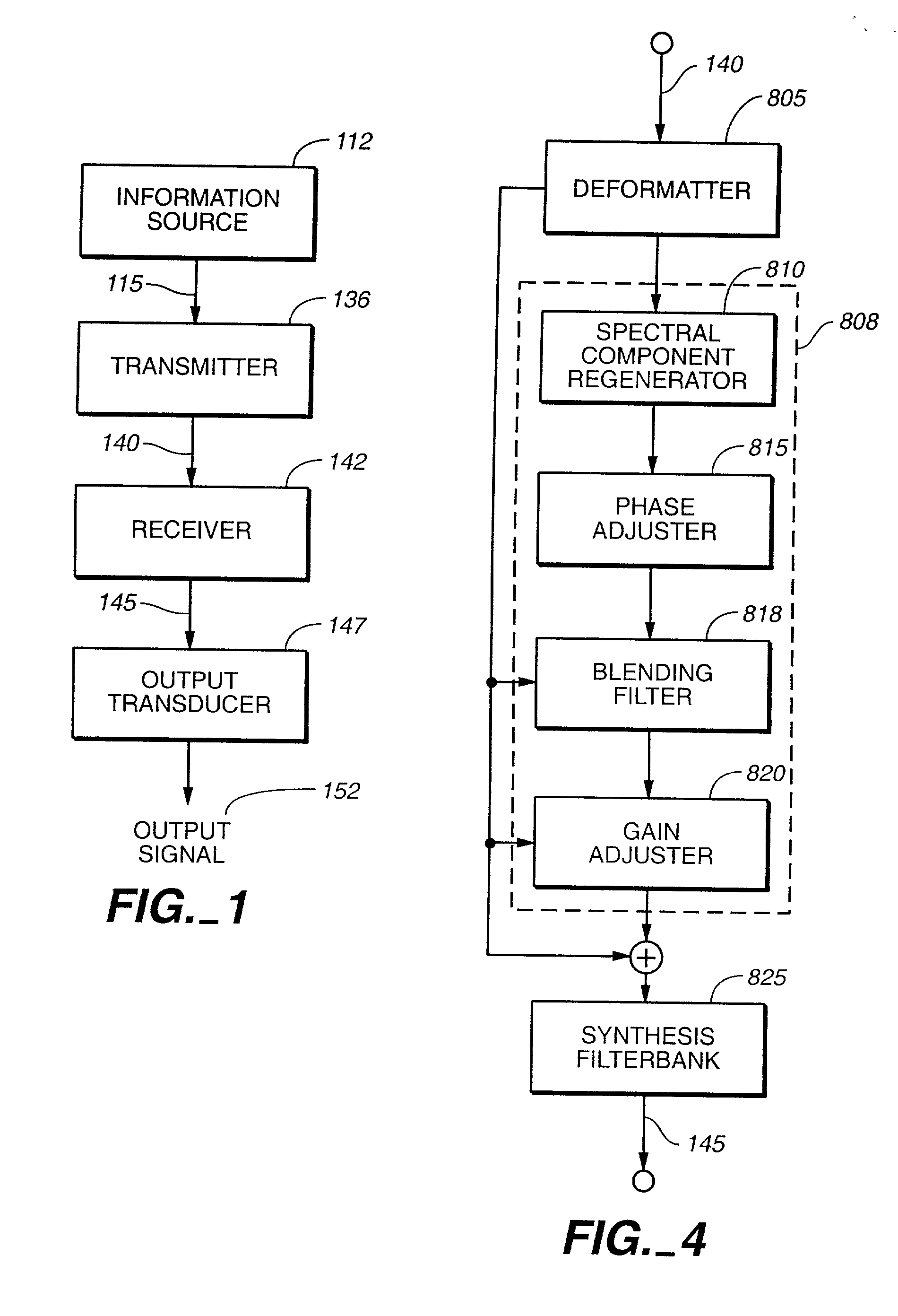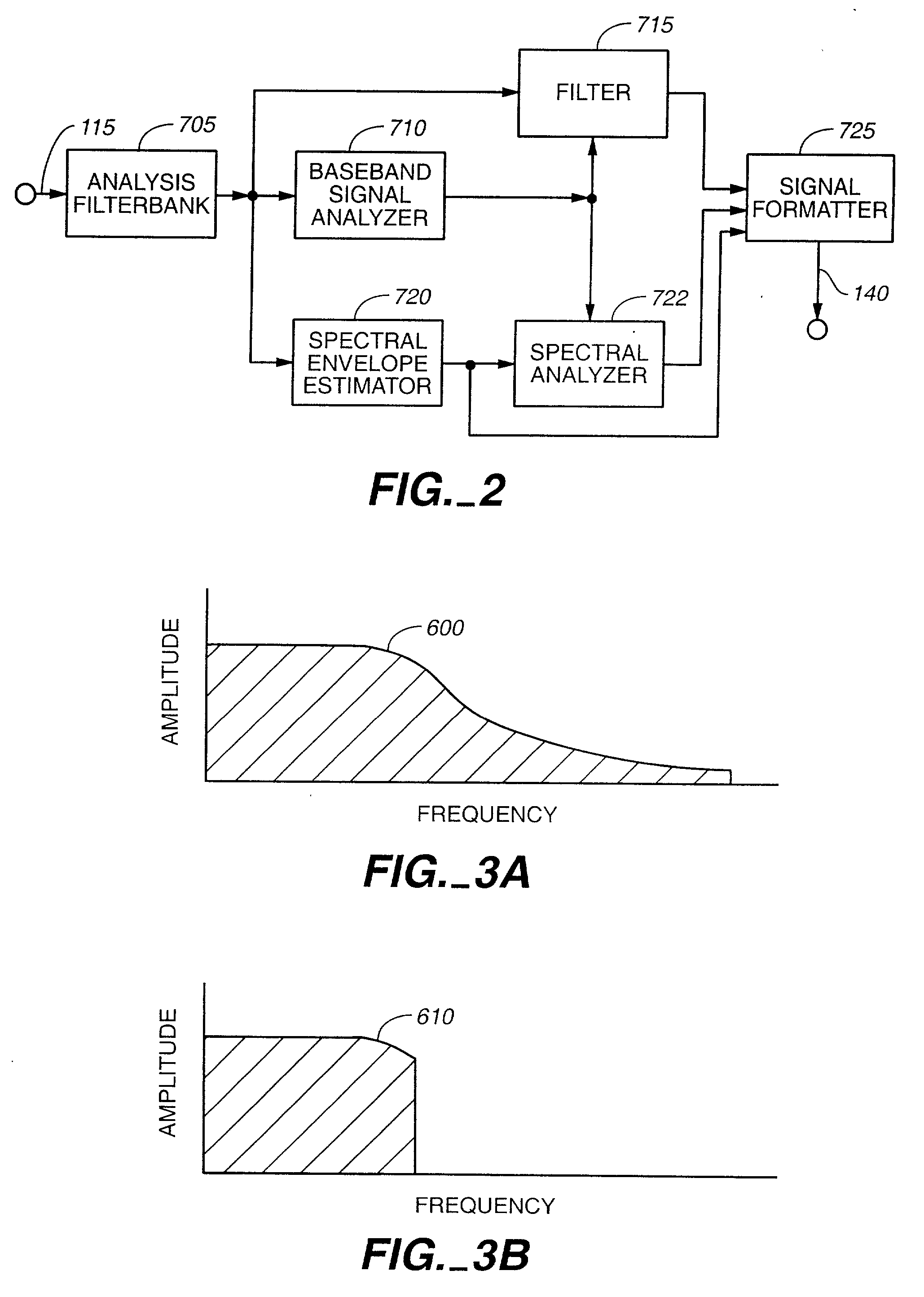Broadband frequency translation for high frequency regeneration
a technology of high frequency regeneration and broadband frequency translation, applied in the field of broadband frequency translation for high frequency regeneration, can solve the problems of reducing the quantity, reducing the perceived quality of the output signal, and reducing the demand for information transmission and storage capacity often exceeds the available capacity, so as to maintain the perceived quality of the signal and reduce the quantity of information
- Summary
- Abstract
- Description
- Claims
- Application Information
AI Technical Summary
Benefits of technology
Problems solved by technology
Method used
Image
Examples
Embodiment Construction
[0030] A. Overview
[0031] FIG. 1 illustrates major components in one example of a communications system. An information source 112 generates an audio signal along path 115 that represents essentially any type of audio information such as speech or music. A transmitter 136 receives the audio signal from path 115 and processes the information into a form that is suitable for transmission through the channel 140. The transmitter 136 may prepare the signal to match the physical characteristics of the channel 140. The channel 140 may be a transmission path such as electrical wires or optical fibers, or it may be a wireless communication path through space. The channel 140 may also include a storage device that records the signal on a storage medium such as a magnetic tape or disk, or an optical disc for later use by a receiver 142. The receiver 142 may perform a variety of signal processing functions such as demodulation or decoding of the signal received from the channel 140. The output ...
PUM
 Login to View More
Login to View More Abstract
Description
Claims
Application Information
 Login to View More
Login to View More - R&D
- Intellectual Property
- Life Sciences
- Materials
- Tech Scout
- Unparalleled Data Quality
- Higher Quality Content
- 60% Fewer Hallucinations
Browse by: Latest US Patents, China's latest patents, Technical Efficacy Thesaurus, Application Domain, Technology Topic, Popular Technical Reports.
© 2025 PatSnap. All rights reserved.Legal|Privacy policy|Modern Slavery Act Transparency Statement|Sitemap|About US| Contact US: help@patsnap.com



